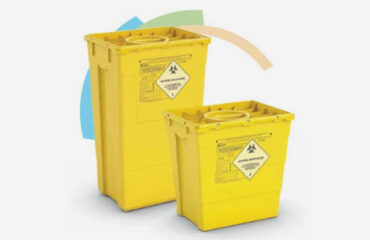The Ultimate Guide To Reclaim Waste
The Ultimate Guide To Reclaim Waste
Blog Article
The Greatest Guide To Reclaim Waste
Table of ContentsReclaim Waste Fundamentals ExplainedThe Reclaim Waste IdeasThe Reclaim Waste StatementsThe 25-Second Trick For Reclaim WasteNot known Facts About Reclaim Waste
Check out the types, events, and kinds of liquid waste. Residential sewage waste refers to the waste and items from a residential septic system. This kind of waste is developed by humans in residences, schools, and various other buildings. This only consists of septic systems that have a drainpipe field. The proper monitoring and disposal of domestic sewer waste need liquid waste to be moved to a sewage therapy plant where the proper techniques and devices are related to cleanse and take care of waste.
Business waste usually includes prospective dangers, such as combustible materials or a mix of fluid and strong waste products, and requires an advanced and detailed disposal procedure. The disposal of industrial waste commonly entails the purification of waste before transportation to ensure secure and correct disposal. Hazardous waste is created from byproducts and overflow of commercial processes and production.
This sort of waste can not use the same sewage administration transportation or processes as septic or business fluids. The hazardous waste administration procedure needs the examination and screening of liquid waste before it undergoes the disposal process (liquid waste disposal). Drainage waste is the fluid waste that originates from drainage and excess stormwater in very booming locations or cities
Runoff waste can cause contamination and flooding if not dealt with correctly. Guaranteeing appropriate waste administration can prevent calamities and reduce environmental injury.
Reclaim Waste - Questions
Contact PROS Services today to discover our waste monitoring and disposal solutions and the proper methods to care for the liquid waste you generate.
(https://myanimelist.net/profile/reclaimwaste1)Do you recognize what happens to your water when you disengage, flush the toilet or drain pipes the washing maker? No? Well, it's worth recognizing. This so-called 'wastewater' is not only a vital resource yet, after therapy, will certainly be released to our land, waterways or the ocean. Made use of water from commodes, showers, baths, kitchen area sinks, washings and commercial processes is called wastewater.

water utilized to cool down equipment or tidy plant and devices). Stormwater, a kind of wastewater, is overflow that streams from agricultural and urban areas such as roof coverings, parks, yards, roadways, paths and rain gutters right into stormwater drains pipes, after rainfall. Stormwater streams unattended straight to regional creeks or rivers, eventually reaching the ocean.
7 Easy Facts About Reclaim Waste Described
In Queensland, many wastewater is treated at sewer therapy plants. Wastewater is transferred from domestic or navigate to this site commercial websites with a system of drains and pump stations, recognized as sewage reticulation, to a sewer treatment plant.
The Division of Natural Resources advises city governments regarding managing, operating and maintaining sewage systems and treatment plants. In unsewered locations, city governments might require owners to install private or home sewer therapy systems to deal with residential wastewater from toilets, kitchens, washrooms and laundries. The Department of Natural Resources authorizes making use of house systems when they are shown to be effective.
In some brand-new class, therapy of some stormwater to eliminate litter, sand and crushed rock has begun utilizing gross contaminant catches. Wastewater therapy occurs in four phases: Eliminates strong matter.
Wastewater after that flows right into large storage tanks where solids resolve and are eliminated as sludge. Oil and residue are skimmed from the surface. Makes use of small living organisms called micro-organisms to break down and remove staying liquified wastes and great fragments. Micro-organisms and wastes are included in the sludge. Removes nitrogen and phosphorus nutrients that could create algal blossoms in our waterways and endanger marine life.
The Basic Principles Of Reclaim Waste
Nutrient elimination is not readily available in any way sewer therapy plants since it calls for pricey specialised devices. It is coming to be much more common in Queensland. Clear fluid effluent generated after therapy may still include disease-causing micro-organisms. If this effluent is launched into waterways such as rivers or the sea, the micro-organisms will eventually die out.

Many wastewater moves into the sewerage system. Under the Act, local governments carry out authorizations and licences for eco relevant tasks (Ages) entailing wastewater releases that may have a regional influence.
A Biased View of Reclaim Waste
Monitoring offers accurate details about water high quality and can validate that permit conditions are being satisfied. The information obtained through surveillance offers the basis for making water high quality decisions.
Report this page